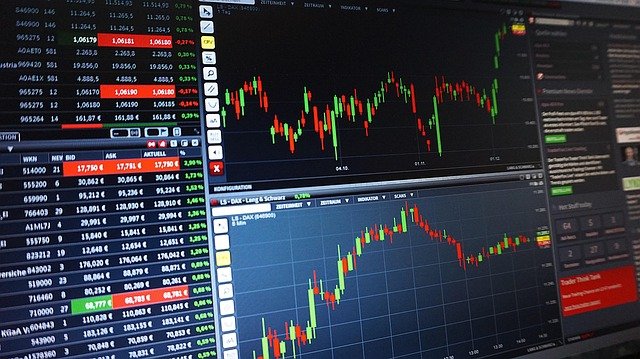
In recent years, there has been a notable shift in investment strategies, with traditional sectors such as manufacturing, logistics, industrial services, and brick-and-mortar retail regaining prominence. Once perceived as relics of a bygone industrial age, these sectors are now attracting renewed interest from investors. This resurgence can be attributed to several factors, including economic uncertainty, supply chain challenges, and the trends of reshoring and nearshoring. Importantly, this revival emphasizes the value of tangible assets that these industries represent. Here, we’ll explore the reasons behind this revival and its implications for the investment landscape.
Economic Uncertainty and Diversification
The global economy has faced significant fluctuations in recent years, marked by events such as the COVID-19 pandemic, geopolitical tensions, and inflationary pressures. In times of uncertainty, investors often seek stability and resilience, leading them to traditional sectors that have historically demonstrated robustness. Unlike technology stocks, which can be highly volatile, traditional sectors tend to offer more predictable returns and can act as a buffer against economic shocks.Moreover, many investors are recognizing the importance of diversification in their portfolios. Traditional sectors, particularly those tied to tangible assets, can provide a hedge against market downturns that may disproportionately affect growth-oriented industries. By incorporating manufacturing, logistics, and retail into their investment strategies, investors can achieve a more balanced risk profile, capitalizing on the inherent value of physical assets.
Supply Chain Challenges
The pandemic exposed vulnerabilities in global supply chains, leading to widespread disruptions and delays. Companies that relied heavily on overseas manufacturing faced significant challenges as ports became congested and transportation costs soared. In this context, traditional sectors have emerged as critical components of a more resilient supply chain.
Manufacturing, in particular, has seen a revival as companies seek to bring production closer to home. This trend not only reduces lead times and transportation costs but also enhances control over quality and compliance. Investors are increasingly recognizing the value of tangible assets represented by domestic manufacturing capabilities, which can bolster national economies while providing stable investment returns.
Logistics has also gained prominence, driven by the need for efficient distribution networks. As e-commerce continues to grow, the demand for logistics services has surged. Companies that provide warehousing, transportation, and last-mile delivery solutions are now viewed as essential players in the economy. Investing in logistics firms represents an opportunity to engage with sectors that are poised for growth, underpinned by the tangible assets that facilitate the movement of goods.
The Reshoring Trend
One of the most significant factors contributing to the resurgence of traditional sectors is the reshoring trend. Reshoring refers to the process of bringing manufacturing and production back to a company’s home country. This movement has gained momentum as businesses aim to mitigate supply chain risks and respond to growing consumer demand for locally sourced products.
Governments have also played a role in encouraging reshoring through incentives, grants, and favorable policies. For instance, the U.S. government has implemented initiatives to support domestic manufacturing, leading to increased investments in factories and infrastructure. This renewed focus on local production not only strengthens national economies but also creates jobs, making these sectors attractive to socially conscious investors seeking tangible assets that contribute to community growth.
Nearshoring: A Strategic Alternative
In addition to reshoring, nearshoring has become an appealing strategy for companies looking to optimize their supply chains. Nearshoring involves relocating manufacturing operations to countries that are geographically closer to the target market. This approach allows companies to maintain some of the cost advantages associated with offshore production while reducing lead times and logistical challenges.
For investors, nearshoring presents opportunities in countries that offer favorable business environments and skilled labor forces. As companies seek to establish production facilities in regions like Mexico or Central America, investors can participate in the growth of these emerging markets. The potential for higher returns, combined with the lower risk associated with reduced transportation distances, makes nearshoring an attractive option, particularly for those focused on tangible assets in their portfolios.
The Evolution of Brick-and-Mortar Retail
While e-commerce has undeniably transformed the retail landscape, brick-and-mortar retail is also experiencing a renaissance. Physical stores are adapting to new consumer preferences by offering personalized experiences, integrating technology, and enhancing customer service. Many retailers are investing in omnichannel strategies that seamlessly blend online and offline shopping experiences.
Investors are beginning to recognize the potential of well-positioned retail properties, particularly those in urban areas or regions with high foot traffic. The resurgence of traditional retail can be attributed to the desire for experiential shopping and the social aspects of in-person interactions. As consumers seek meaningful connections with brands, brick-and-mortar stores are evolving to meet these needs, presenting opportunities for investors to capitalize on the tangible assets these properties offer.
Conclusion
The renewed interest in traditional sectors such as manufacturing, logistics, industrial services, and brick-and-mortar retail reflects a broader shift in investment strategies driven by economic uncertainty, supply chain challenges, and the trends of reshoring and nearshoring. These sectors offer stability, resilience, and growth potential, making them attractive options for investors seeking to diversify their portfolios with tangible assets.
As the global economy continues to evolve, traditional sectors will play a crucial role in shaping the investment landscape. By embracing these industries, investors can position themselves for success in a world where adaptability and resilience are key to navigating uncertainty. The resurgence of traditional sectors, rooted in the value of tangible assets, may signal a more balanced approach to investing—one that honors the lessons of the past while embracing the opportunities of the future.



